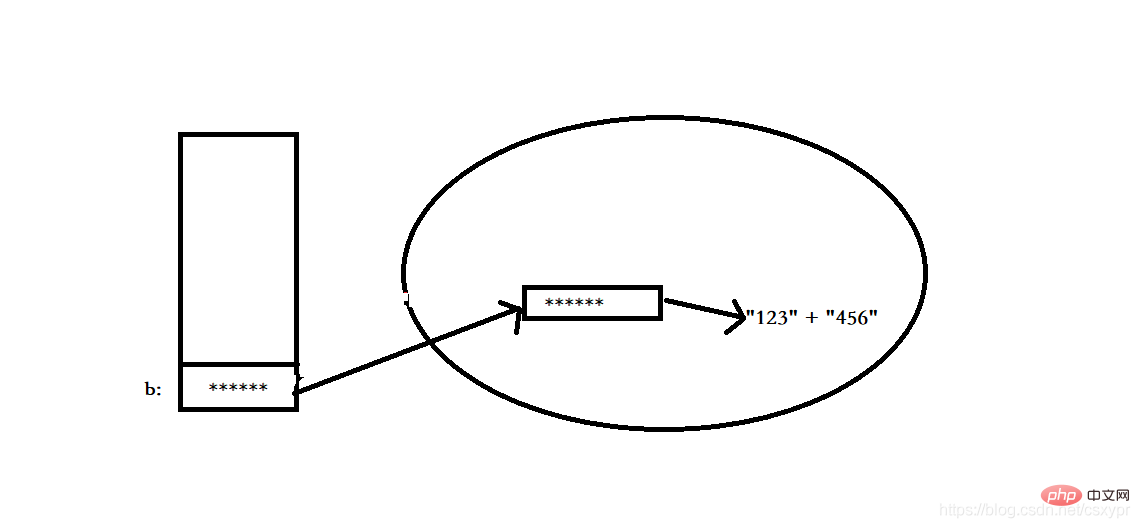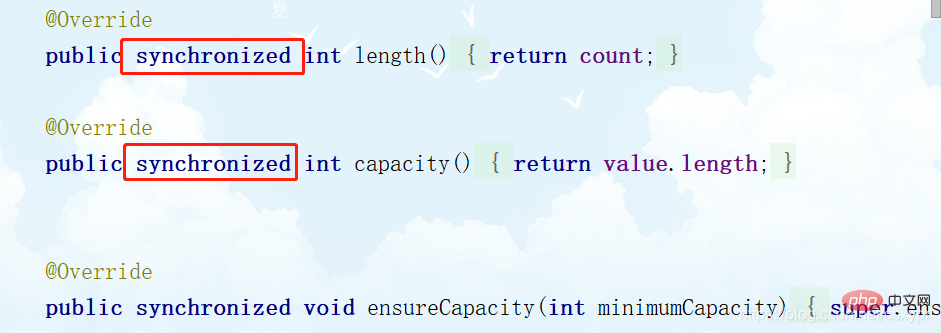Difference: The String class is an immutable class. When a String object is created, the character sequence contained in the object is immutable until the object is destroyed; the StringBuffer object represents a mutable string object, and Thread-safe; the StringBuilder class represents mutable string objects and is not thread-safe.

##The difference between String, StringBuffer and StringBuilder:
String
The String class is an immutable class, that is, once a String object is created, the character sequence contained in the object cannot be changed until the object is destroyed. . This is an explanation of the String class. Xiao Xian'er saw this situation before and could not understand the above explanation, as followsString a = "123"; a = "456"; // 打印出来的a为456 System.out.println(a)Seeing this, Xiao Xian'er did not understand. This is not obvious Has it been modified? Why is it said that it is an immutable class? After learning from Xiao Xianer and his friends, we understand where the immutability of the String class is reflected. Next, let’s look at a memory storage space diagram of the above
a object
StringBuffer## The StringBuffer object represents a string with a variable character sequence. When a StringBuffer is created, the append provided by StringBuffer (), insert(), reverse(), setCharAt(), setLength() and other methods can change the character sequence of this string object. Once the final desired string is generated through the StringBuffer, you can call its toString() method to convert it into a String object.
StringBuffer b = new StringBuffer("123");
b.append("456");
// b打印结果为:123456
System.out.println(b);
Let’s take a look at the memory space diagram of the
b object: So the StringBuffer object is a string with a variable character sequence. An object is not regenerated, and new strings can be concatenated into the original object.
So the StringBuffer object is a string with a variable character sequence. An object is not regenerated, and new strings can be concatenated into the original object.
StringBuilder The StringBuilder class also represents mutable string objects. In fact, StringBuilder and StringBuffer are basically similar, and the constructors and methods of the two classes are also basically the same. The difference is:
StringBuffer is thread-safe, while StringBuilder does not implement thread-safety functions, so the performance is slightly higher.How does StringBuffer achieve thread safety?
Methods implemented in the StringBuffer class:
 Methods implemented in the StringBuilder class:
Methods implemented in the StringBuilder class:
 It can be seen that the
It can be seen that the
is added to the methods in the StringBuffer class, which means a lock is added to this method to ensure thread safety.
Improvements of Java9Java9 has improved the implementation of strings (including String, StringBuffer, and StringBuilder). Before Java 9, strings used char[] arrays to store characters, so each character in the string occupies 2 bytes; while in Java 9, strings used byte[] arrays plus an encoding-flag field to store characters, so strings Each character occupies only 1 byte. Therefore, Java9's strings are more space-saving, and the functional methods of strings are not affected.
For more programming-related knowledge, please visit:
Introduction to ProgrammingThe above is the detailed content of What is the difference between string, stringbuffer and stringbuilder?. For more information, please follow other related articles on the PHP Chinese website!